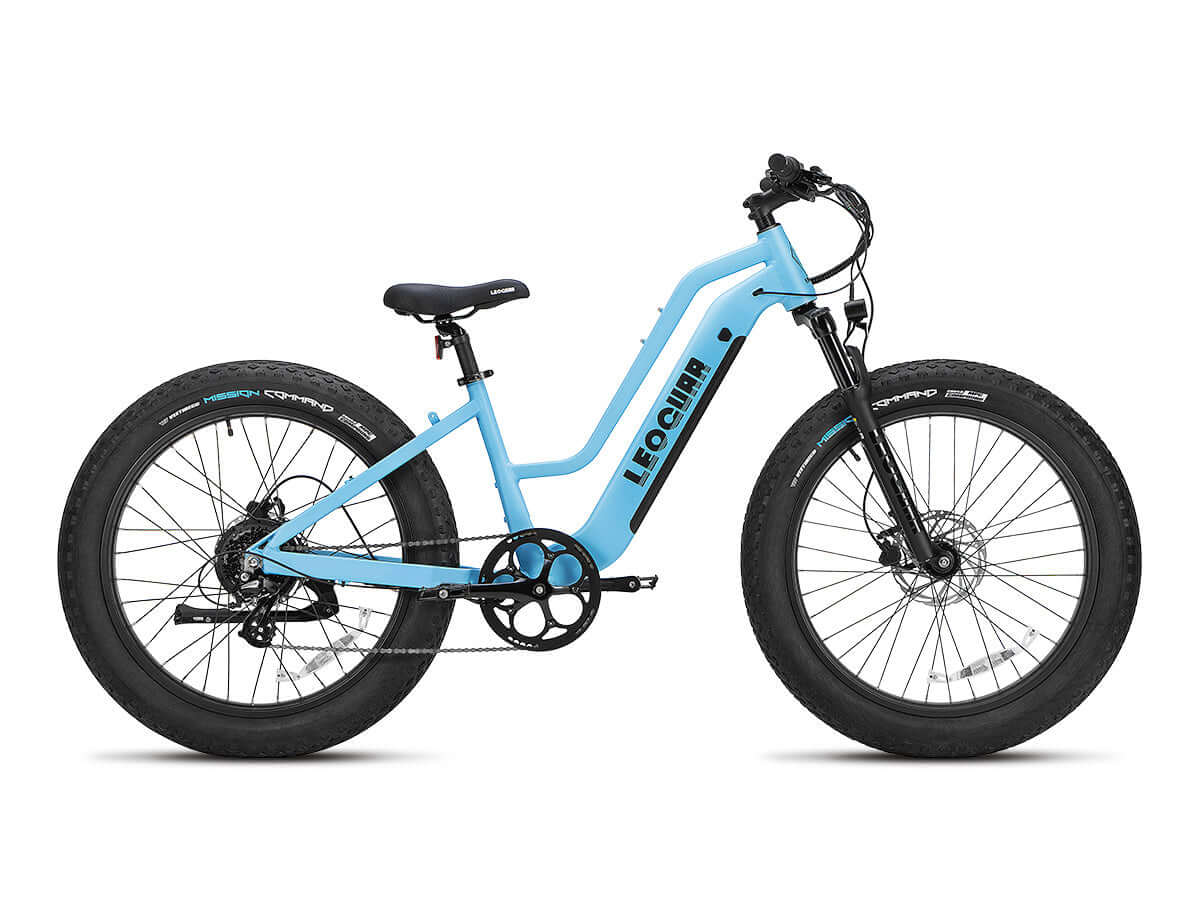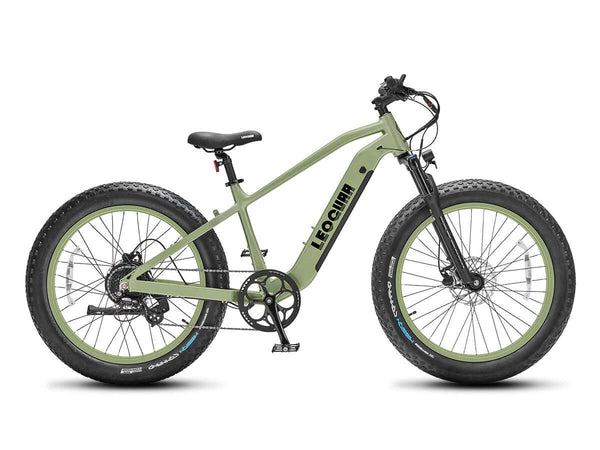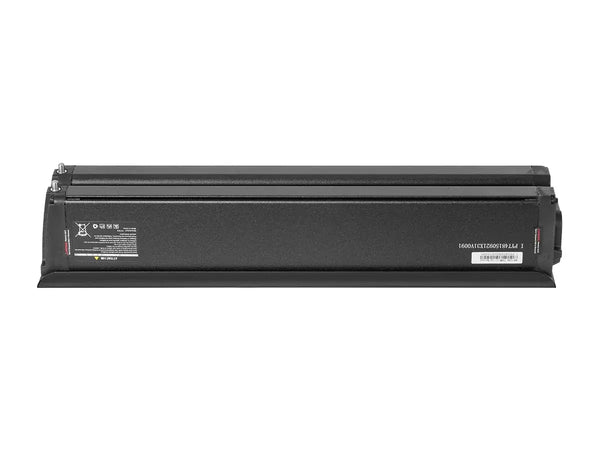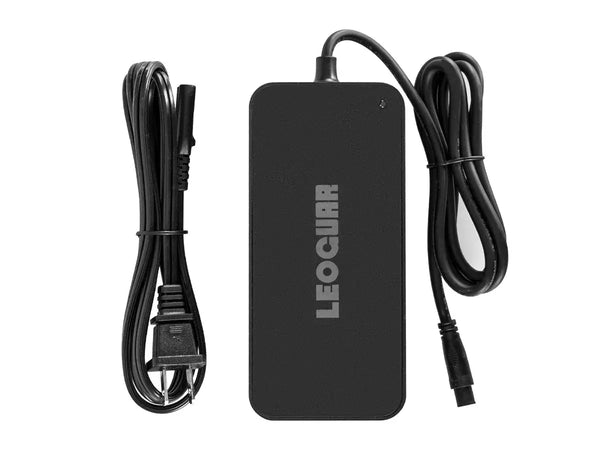
Electric Bike Charger Explained: How Long Does It Take to Charge an Electric Bike?
So, you've got a new electric bike, and the biggest question on your mind is: how long does it take to charge? It's the most common question we hear. The answer is important for planning your rides. Most standard e-bike batteries take between 3 to 6 hours for a full charge from empty.
However, the exact time depends on a few key factors. Understanding them helps you predict your charge time and keep your battery healthy. This guide will walk you through a simple way to calculate your specific charge time, help you understand your electric bike charger, and provide expert tips for safety and battery health. Think of it as the owner's manual you've always wanted.
Calculating Your Charge Time
Charging time isn't a mystery; it's simple math. To find the exact answer, you only need to know two things about your setup: your battery's capacity and your charger's output. The main parts are Battery Capacity, measured in Amp-hours (Ah), and the Charger Output, measured in Amps (A). With these two numbers, you can use a simple formula that's easy to remember.
Battery Capacity (Ah) / Charger Output (A) = Charging Time (Hours)
Let's walk through an example. If you have a common 14Ah battery and a standard 2A electric bike charger, the calculation is easy to do.
14 Ah / 2A = 7 hours
This tells you it will take about 7 hours to charge your battery from completely empty to 100% full. This formula helps you know exactly how long you need to wait before your next adventure. To make it even easier, we've created a quick reference table. Find your battery's capacity in the left column and your charger's type along the top row to get a good estimate of your charging time.
E-Bike Charging Time Estimator
| Battery Capacity (Ah) | Standard Charger (2A) | Fast Charger (4A) | Rapid Charger (5A+) |
|---|---|---|---|
| 10Ah | 5 hours | 2.5 hours | 2 hours |
| 15Ah | 7.5 hours | 3.75 hours | 3 hours |
| 20Ah | 10 hours | 5 hours | 4 hours |
| 25Ah | 12.5 hours | 6.25 hours | 5 hours |
These times are estimates for a full charge from 0%. As you'll see, the final few percent often take a bit longer. Also, according to data from major manufacturers like Bosch, different battery packs have specific charging times based on their internal chemistry and management systems. For instance, a Bosch PowerPack 545 takes about 4.9 hours to fully charge with their standard 4A charger.

Factors Affecting Charge Speed
If your charging time is different from the estimates, several factors are likely at play. Understanding the "why" behind the numbers will help you figure out your charging speed and make smart decisions.
Battery Capacity Explained
Think of your battery's capacity as its "gas tank." This is measured in two ways: Amp-hours (Ah) and Watt-hours (Wh). Amp-hours (Ah) represent the size of the tank, while Watt-hours (Wh) measure the total energy it can hold. Just like a larger car has a bigger gas tank that takes longer to fill, an e-bike with a higher Ah or Wh rating will naturally take longer to charge.
Charger Power (Amps)
If the battery is the gas tank, the electric bike charger's Amperage (A) is the "fuel pump" speed. It controls how quickly energy flows from the outlet into your battery. A standard charger is typically 2A. A fast charger might be 4A, 5A, or even more. A 4A charger will fill your battery roughly twice as fast as a 2A charger, making it a great choice for riders who need quick turnarounds.
Your Battery's Starting Point
Charging is not a straight process. A battery charges fastest when it's nearly empty and slows down a lot for the last 10-20%. For example, charging from 80% to 100% can take almost as long as charging from 20% to 50%. This is because the Battery Management System (BMS) is working carefully to balance the individual cells to prevent stress and help the battery last longer. On that note, it's a good practice that topping off your battery often is better for its long-term health than draining it to zero every time.
Battery Age and Health
Like all lithium-ion batteries, your e-bike battery will get worse over time. As a battery ages, its total capacity goes down, and it may begin to charge more slowly. This is a natural and expected process. A well-maintained battery will offer years of good performance, but an older battery will not hold as much charge or fill up as quickly as it did when it was new.
Your Electric Bike Charger
The charger is the unsung hero of your e-bike setup. It's more than just a cord; it's a smart piece of equipment designed to safely and efficiently power your rides. Let's break down what you need to know.
Charger Anatomy 101
Every electric bike charger has three key specs you must understand:
Voltage (V): This is the single most important factor. You must match the charger's voltage to your battery's voltage. For example, a 48V battery requires a 48V charger. Using a charger with the wrong voltage is very dangerous. A lower voltage charger won't charge the battery, while a higher voltage charger can permanently damage the battery, the BMS, or even cause a fire. Always double-check this specification.
Amperage (A): As we've covered, this is the charging speed. It's generally safe to use a charger with a lower amperage than your original one—it will just charge more slowly. You can sometimes use a higher-amperage (faster) charger, but only if your battery manufacturer says the battery is rated to handle it. Check your e-bike manual or the battery's sticker for this information.
Connectors: Chargers come with various plug types, such as Barrel, XLR, or special designs. The easiest way to ensure compatibility is to visually match the connector to your bike's charging port or your old charger. When in doubt, check your electric bike specifications.
Choosing Your Charger Type
When buying a replacement or a spare, you'll see a few different types of chargers. Each has its own pros and cons.
| Charger Type | Best For | Pro | Con |
|---|---|---|---|
| Standard (2-3A) | Overnight charging, battery health | Gentle on battery cells, helps battery last longer | Slowest charging option |
| Fast (4A+) | Commuters, quick top-ups | Cuts down charge time a lot | Makes more heat, can reduce long-term battery life if used all the time |
| Smart Charger | Tech-savvy users, best battery care | Features like auto-shutoff, health monitoring | More expensive, may be model-specific |
No matter what you choose, a key safety and performance rule is to always focus on the original manufacturer charger from the OEM. If that's not possible, select a high-quality, certified replacement from a good brand that perfectly matches your battery's voltage, amperage, and connector type.

Smart Charging Best Practices
Proper charging habits do more than just fill your battery; they protect your investment, ensure safety, and help your e-bike's most expensive part last longer. Follow these expert-level guidelines for a worry-free charging routine.
The Perfect Charging Sequence
The order in which you plug things in matters. Following this simple 4-step process helps prevent a small electrical spark at the charging port, which can damage the sensitive pins on your charger and battery over time.
- Prepare the Connection: First, make sure the electric bike charger is unplugged from the wall outlet.
- Connect to Battery: Plug the charger's connector into the charging port on your e-bike's battery. Now, plug the charger's power cord into the wall outlet.
- Connect to Power: You should see an indicator light on the charger turn on (usually red or orange) to show it's charging.
- Disconnect Safely: Once the battery is full (the indicator light will typically turn green), unplug the charger from the wall outlet first. Then, you can disconnect the charger from the battery port.
Pro Tips for Battery Health
- The 80/20 Rule: For best longevity, try to keep your battery's charge level between 20% and 80%. You don't need to charge to 100% every single time. Only charge to full when you know you'll need the maximum range for a long ride.
- Mind the Temperature: Batteries are like people; they don't like extreme temperatures. Avoid charging in direct sunlight, near a heat source, or in freezing conditions. Always charge your battery at room temperature for best results. If you've been riding in the cold, let the battery warm up indoors for an hour before plugging it in.
- Don't Leave it Drained: Never store your electric bike for a long period (more than a few weeks) with an empty battery. This can cause damage that can't be fixed. If you're storing your bike for the winter, aim to leave the battery with a 40% to 60% charge and check it every month or so.
- Charge in a Safe Space: Always charge your e-bike on a hard, flat surface like a concrete floor in a garage. Avoid charging on carpet, furniture, or near any materials that can catch fire. Make sure the area has good air flow.
- Avoid "Overnight" Charging All the Time: While modern smart chargers have auto-shutoff features, it's still best practice to unplug your charger soon after the battery is full. This gets rid of any small risk of problems and saves a small amount of energy.
Frequently Asked Questions
1. Q: Can I use a car charger to charge my e-bike battery?
A: No, you should never use a car charger for your e-bike battery. Car chargers have different voltage and amperage ratings that can damage your battery or create safety risks. Always use a charger specifically designed for your e-bike model.
2. Q: Is it bad to charge my e-bike battery every day?
A: It's not bad to charge daily, but it's not always necessary. Modern lithium-ion batteries handle frequent charging well. However, for best battery health, try to follow the 80/20 rule and only charge to 100% when you need the full range.
3. Q: What should I do if my battery takes much longer to charge than expected?
A: If charging time increases significantly, your battery may be aging or there could be an issue with your charger. Check that you're using the correct charger, ensure the charging port is clean, and verify the ambient temperature is appropriate. If problems persist, consult your bike manufacturer.
4. Q: Can I leave my e-bike plugged in all the time?
A: While most modern chargers have safety features, it's not recommended to leave your e-bike plugged in constantly. This can generate unnecessary heat and potentially reduce battery lifespan. Unplug the charger once the battery reaches full charge.
5. Q: How do I know when my e-bike battery needs to be replaced?
A: Signs that your battery may need replacement include significantly reduced range, much longer charging times, the battery not holding charge, or visible swelling or damage. Most e-bike batteries last 3-5 years with proper care, depending on usage and maintenance.











































Leave a comment